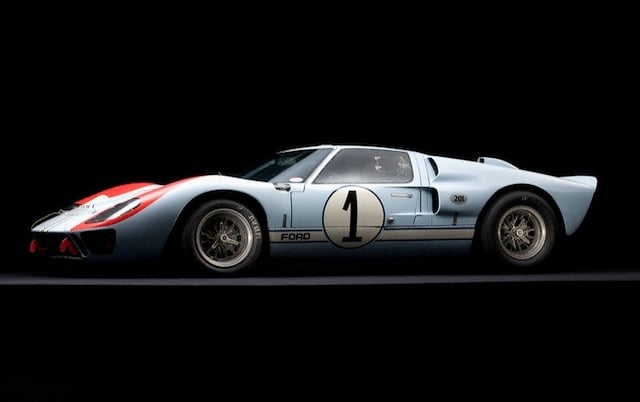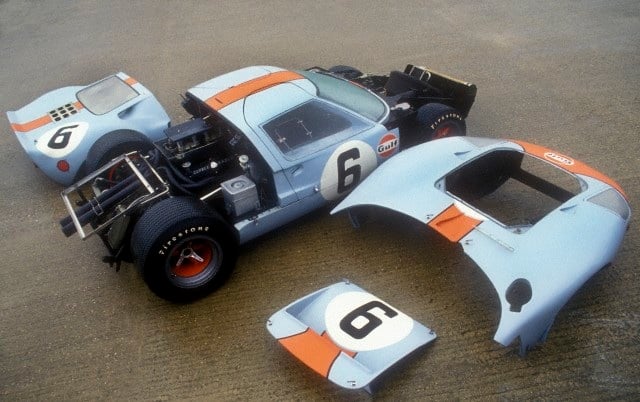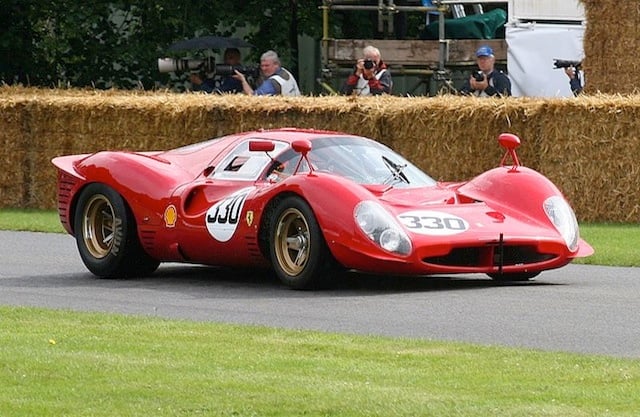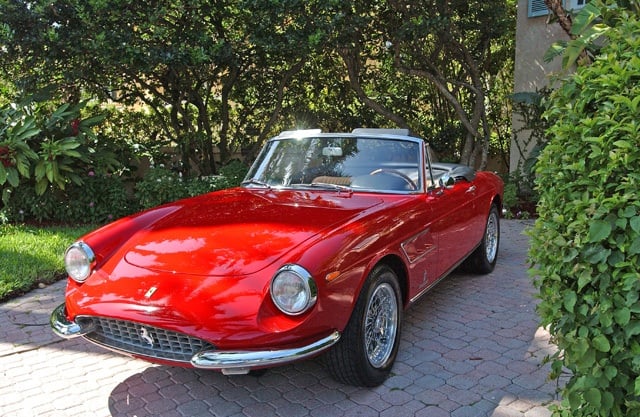The longest-known and most cherished story of endurance racing here in America has to be the one of Carroll Shelby [2] and Ford, and the legend of how the combined forces fused together to beat Maranello’s best.
The Mark II GT40 and the JW Automotive/American Gulf Oil Mark I car. The #6 GT40, P/1075, was one of the few racecars ever built to win the 24-hour LeMans back-to-back...
In the world of GT racing, Enzo Ferrari couldn’t possibly be beat; a shrewd businessman and an even scarier race car driver, there were just no bounds to what Enzo and the Ferrari world would do to dominate the endurance circuit. Back in America, Henry Ford II had made a blatant attempt, in 1963, to completely buy-out Ferrari, but Enzo himself refused to make the sale. Embittered by this rejection, Ford II made “kicking Ferrari’s ass” into a company mandate.
Ferrari's 330 series, successor to the 250, shared more in common dimension-wise with the 275 car. The race version of the 330 series, known as the 330-P, was by far the fastest and produced the most brake horsepower of all the 330 cars.
Also during 1963, Ferrari had introduced the 330 series of cars that would become successor to the 250. A car that shared several of its predecessor’s components for years, the 330 would not become its own unique model until the 330 GT 2+2 was introduced in January of 1964. The first 330 America, however, was simply a 250 GT/E with a bigger engine, and the 330 GTS and GTC shared a slightly shorter wheelbase chassis in common with the 275 car. The 330 GTS and GTC also shared the 275’s independent rear suspension.
 [7]
[7]On June 13th, 1969, drivers Jacky Ickx and Jackie Oliver won the 24-hour LeMans in a GT40 entered by the John Wyer team.
The racing version of Ferrari’s 330 series was designated the “P” series, and this version existed as the 330 P, P2, P3 and P4, all of which were mid-engined cars built during the middle part of the ’60s. But of all the 330 Ps that were built, the 330 P4 was by far the fastest, producing 450bhp at 8500rpm, making the 1763-pound car capable of reaching a top, recorded speed of 198.85mph.
Knowing that the Ford Motor Company was going to have to build an equivalent car to Ferrari for LeMans, Ford II made building such a car into a company duty. The original GT40 was developed in England by Ford Advanced Vehicles Ltd., under the direction of Aston Martin’s former team manager, John Wyer. The original car, powered by Ford’s 289 small block, failed at the ’64-’65 LeMans, and Ford was once again left trying to beat Ferrari.
At that point, failure at LeMans was not an option for Ford II, and anyone who worked for Ford who didn’t embrace this new policy was at risk of losing their jobs. Meanwhile, Carroll Shelby’s own success at LeMans had been obtained in his 427-powered Cobras, Ford’s 427 an engine that proved more capable of endurance racing, in spite of its lower-revving characteristics and large displacement, than the higher-revving, small-displacement 12-cylinder engines from Ferrari.
Carroll Shelby, then, became the Ford Company’s “top dog” in the 24-hour racing department. His formula for defeating Enzo Ferrari at LeMans was simple: take the same 427 motors that were being run in the Cobras and replace them with the current 289 in the GT40. Though a very simple formula for horsepower, Shelby’s idea of transplanting the 427 motors into the GT40s was one that led to Ford and Shelby ending Ferrari’s reign on the endurance track, obtaining wins for Ford on the race circuit from 1966-69.
Though “backyard-built” and simple in ideology, Ford and Shelby’s GT40 will continue to reign as the homesoil’s answer to the likes of Ferrari, Lamborghini and other overseas, supercar builders.







